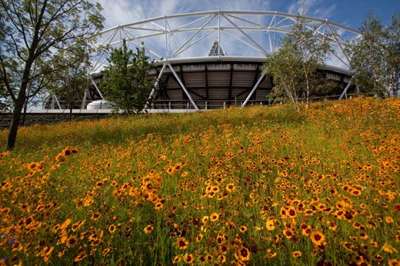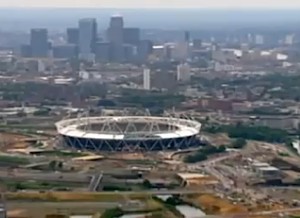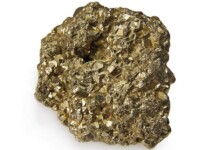 London is using its plans for the 2012 Olympic games to revitalize neighborhoods, clean up a polluted industrial site and generate a large urban park with wetlands that will attract birds, otters and other wildlife, while leaving a legacy of sustainability for East Londoners.
London is using its plans for the 2012 Olympic games to revitalize neighborhoods, clean up a polluted industrial site and generate a large urban park with wetlands that will attract birds, otters and other wildlife, while leaving a legacy of sustainability for East Londoners.
Acres of chemical storage plants and factories on the site had left the soil infused with heavy metals, arsenic, cyanide and oil. An enormous clean-up operation using five soil washing machines from Belgium restored 95 percent of the dirt for reuse.
One of the existing mill buildings of historic interest at Kings Yard will be renovated and reused, rather than torn down.
The site’s engineers reduced flood risk for thousands of homes along the River Lea by restoring natural floodplains and planning for the waste disposal of new facilities taking into account the possible rising water levels resulting from climate change.
Green is the New Gold for Olympics 2012

Building infrastructure along existing rail and transport lines, along with a 75km network of completed walking and biking paths will help keep traffic and emissions to a minimum and allow easy access to the park for surrounding communities after the games.
The park will be planted with hundreds of native species, including oak, ash, willow, birch, hazel, holly, blackthorn and hawthorn, a green space that will become one of the largest urban parks created in Europe in the past 150 years.
The world-class sports facilities will be adapted for use by sports clubs and the local community as well as elite athletes. New playing fields sitting alongside these facilities will be adapted for community use.
Biomass boilers on site will provide most of the park’s green energy using a sustainable biomass fuel from wood-chips. The Olympic developers had hoped to use renewable sources to provide 20% of the site’s energy, but ended up settling for 11%
With 22 weeks to go until London 2012, most of the plans to create the greenest Olympics have been realized.
“What I hope we’ve managed to achieve here is a new place in London that people will want to come to,” the Olympic Development chair Sir John Armitt told the Metro newspaper.
“You can’t justify spending £7billion on a six-week party. There’s got to be a legacy.”
WATCH the video from the Olympic Agency, or LEARN more at www.london2012.com.



















